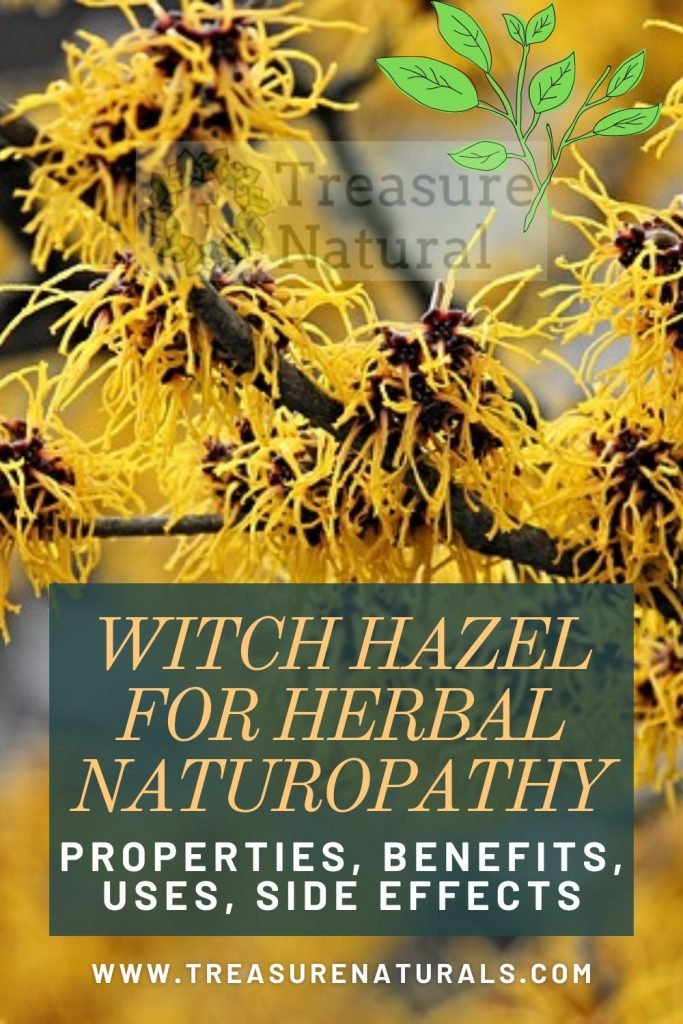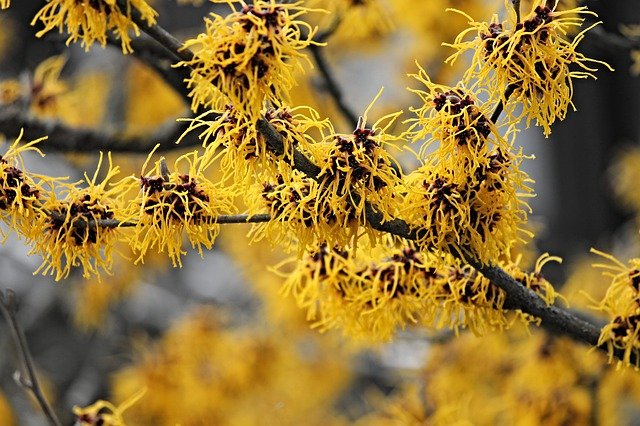
Witch hazel has astringent, anti-emmagical and anti-inflammatory properties useful in the treatment of hemorrhoids, vascular problems and inflammation of the skin and mucous membranes.
Witch hazel (Hamamelis virgianana) is a plant of the Hamamelidaceae family. Rich in tannins and flavonoids, it has astringent and antihemorrhagic properties. Let’s find out more.
Properties of witch hazel
Witch hazel has astringent, anti-inflammatory, antibacterial, antiviral, hemostatic and vasoconstrictor properties. The drug consists of the leaves and bark, rich in tannins and flavonoids and used both internally and externally.
In particular, witch hazel is used in case of venous insufficiency and to treat hemorrhoids but is also used in case of bruises, inflammation and acute diarrhea.
Traditionally it is used for disorders of the uterus and ovaries including dysmenorrhea, heavy menstruation, menstrual pain and menopausal disorders.
Locally, witch hazel is also used in case of minor lesions of the skin and in inflammations of the skin and mucous membranes to treat wounds, gingivitis and conjunctivitis. The hydroalcoholic extract of witch hazel has bacteriostatic action and seems to be active against Herpes simplex infections.
Witch hazel water, obtained from the distillation of leaves, bark and twigs of the plant, is then used in eye irritations due to excessive dryness, smoke, wind and sun, in the form of eye baths or eye drops.
How to use
The plant is used both for internal use in the form of infusion, mother tincture and other preparations. The infusion is prepared 2 grams of the drug in a cup of boiling water; drink two or three cups a day between meals, after filtering and letting cool.
The mother tincture is administered one to three times a day, diluting 30 drops in a glass of water. In herbal medicine are also available dry extracts and fluids to be taken according to the indications on the label.
Externally we use infusions, creams,ointments and ointments useful in case of hemorrhoids, phlebitis, varicose veins and inflammation of the skin.
Hamamelis distilled water is a cosmetic preparation useful in inflammation of the mouth, gums, and for eye irritations or in case of allergic conjunctivitis.
Contraindications
Witch hazel is considered a safe remedy but, given the high content of tannins, it is a drug that should not be used for long periods. Prolonged use or excessive dosage can provoke irritation of the gastric mucosa and constipation in sensitive individuals.
Administration is not recommended in pregnant and lactating women and is contraindicated in people allergic to one or more components of the plant and in case of liver diseases.
Description of the plant
Amalelide is a shrubby plant, with tortuous and very branched stems, which can reach a height of 4-7 meters. The bark has a brown surface and is covered with a thin layer of whitish cork. The leaves are oval, with serrated margin and sharp apex, dark green on the upper page and green-gray on the lower one.
The flowers hatch in autumn, after leaf falland have yellow and linear petals. Simultaneously with flowering ripen the fruits of the previous year, small woody capsules.
The habitat of witch hazel
It grows wild in the eastern coasts of North America, in the humid forests of Canada and the Northern United States
Background

The American Indians used it for its healing properties and also attributed it an extraordinary magical power to the point of considering it a “working tool” of shamans, during their ritual and propitiatory practices.
The discovery of witch hazel in science, however, is relatively recent. In fact, in 1731 Mark Caterby mentioned the plant in his work Natural History of Carolina, Florida and the Bahamas Islands and had it introduced to Europe, to become an ornamental plant.
However, the Virginian variety assumed over time more and more importance under the therapeutic aspect for its astringent and hemostatic properties, highlighted by studies dating back to the early ‘900, when tannins were identified inside the leaves and bark.






